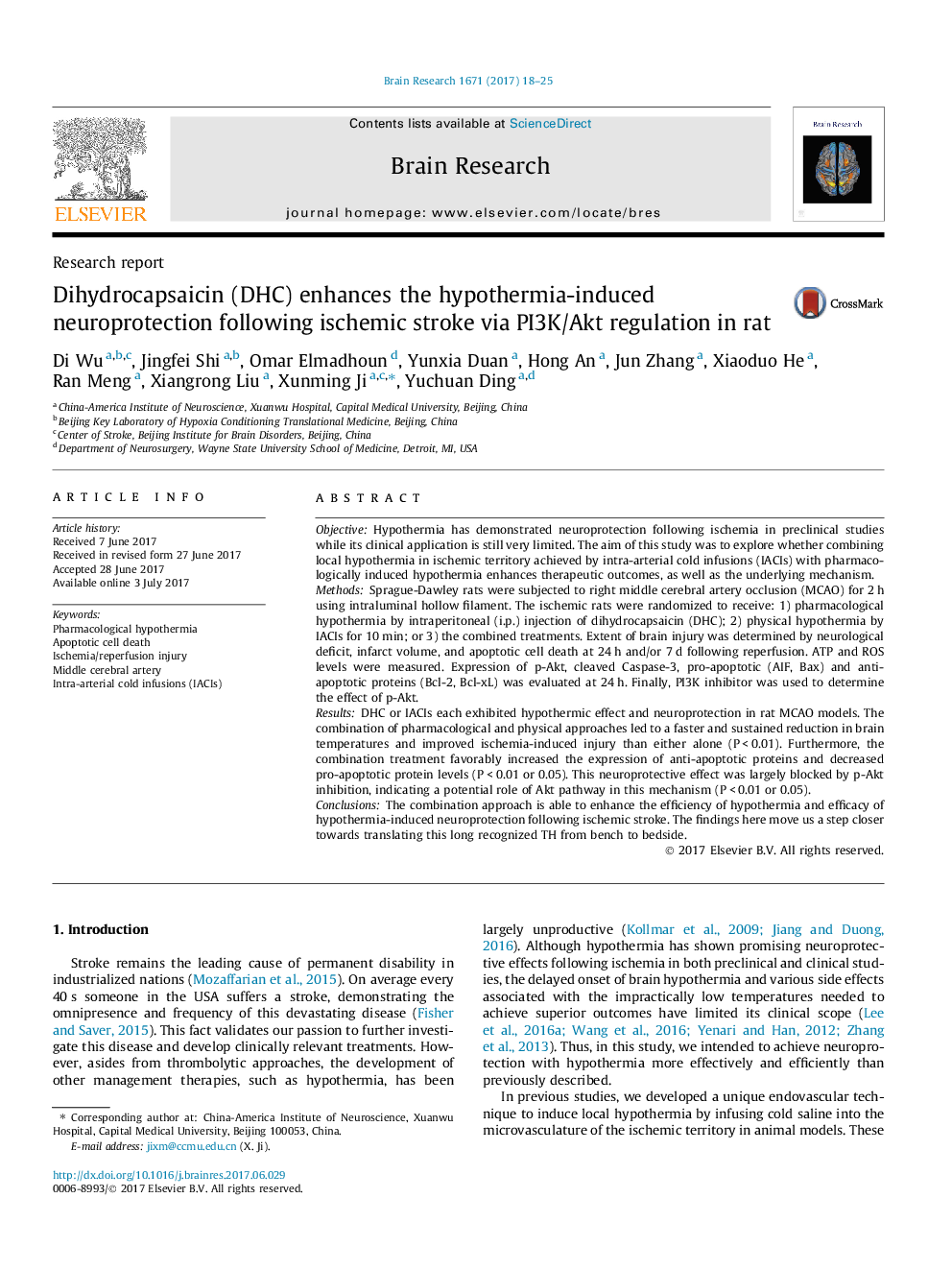| کد مقاله | کد نشریه | سال انتشار | مقاله انگلیسی | نسخه تمام متن |
|---|---|---|---|---|
| 5736721 | 1613774 | 2017 | 8 صفحه PDF | دانلود رایگان |

- We investigated the neuroprotective effects of pharmacological hypothermia and local hypothermia in rat MCAO models.
- The combination of the above methods enhances the efficiency of hypothermia.
- The combination of the above methods enhances efficacy of hypothermia-induced neuroprotection following ischemic stroke.
- PI3K/Akt apoptotic pathway is a possible mechanism for the combination therapy.
ObjectiveHypothermia has demonstrated neuroprotection following ischemia in preclinical studies while its clinical application is still very limited. The aim of this study was to explore whether combining local hypothermia in ischemic territory achieved by intra-arterial cold infusions (IACIs) with pharmacologically induced hypothermia enhances therapeutic outcomes, as well as the underlying mechanism.MethodsSprague-Dawley rats were subjected to right middle cerebral artery occlusion (MCAO) for 2Â h using intraluminal hollow filament. The ischemic rats were randomized to receive: 1) pharmacological hypothermia by intraperitoneal (i.p.) injection of dihydrocapsaicin (DHC); 2) physical hypothermia by IACIs for 10Â min; or 3) the combined treatments. Extent of brain injury was determined by neurological deficit, infarct volume, and apoptotic cell death at 24Â h and/or 7Â d following reperfusion. ATP and ROS levels were measured. Expression of p-Akt, cleaved Caspase-3, pro-apoptotic (AIF, Bax) and anti-apoptotic proteins (Bcl-2, Bcl-xL) was evaluated at 24Â h. Finally, PI3K inhibitor was used to determine the effect of p-Akt.ResultsDHC or IACIs each exhibited hypothermic effect and neuroprotection in rat MCAO models. The combination of pharmacological and physical approaches led to a faster and sustained reduction in brain temperatures and improved ischemia-induced injury than either alone (PÂ <Â 0.01). Furthermore, the combination treatment favorably increased the expression of anti-apoptotic proteins and decreased pro-apoptotic protein levels (PÂ <Â 0.01 or 0.05). This neuroprotective effect was largely blocked by p-Akt inhibition, indicating a potential role of Akt pathway in this mechanism (PÂ <Â 0.01 or 0.05).ConclusionsThe combination approach is able to enhance the efficiency of hypothermia and efficacy of hypothermia-induced neuroprotection following ischemic stroke. The findings here move us a step closer towards translating this long recognized TH from bench to bedside.
Journal: Brain Research - Volume 1671, 15 September 2017, Pages 18-25